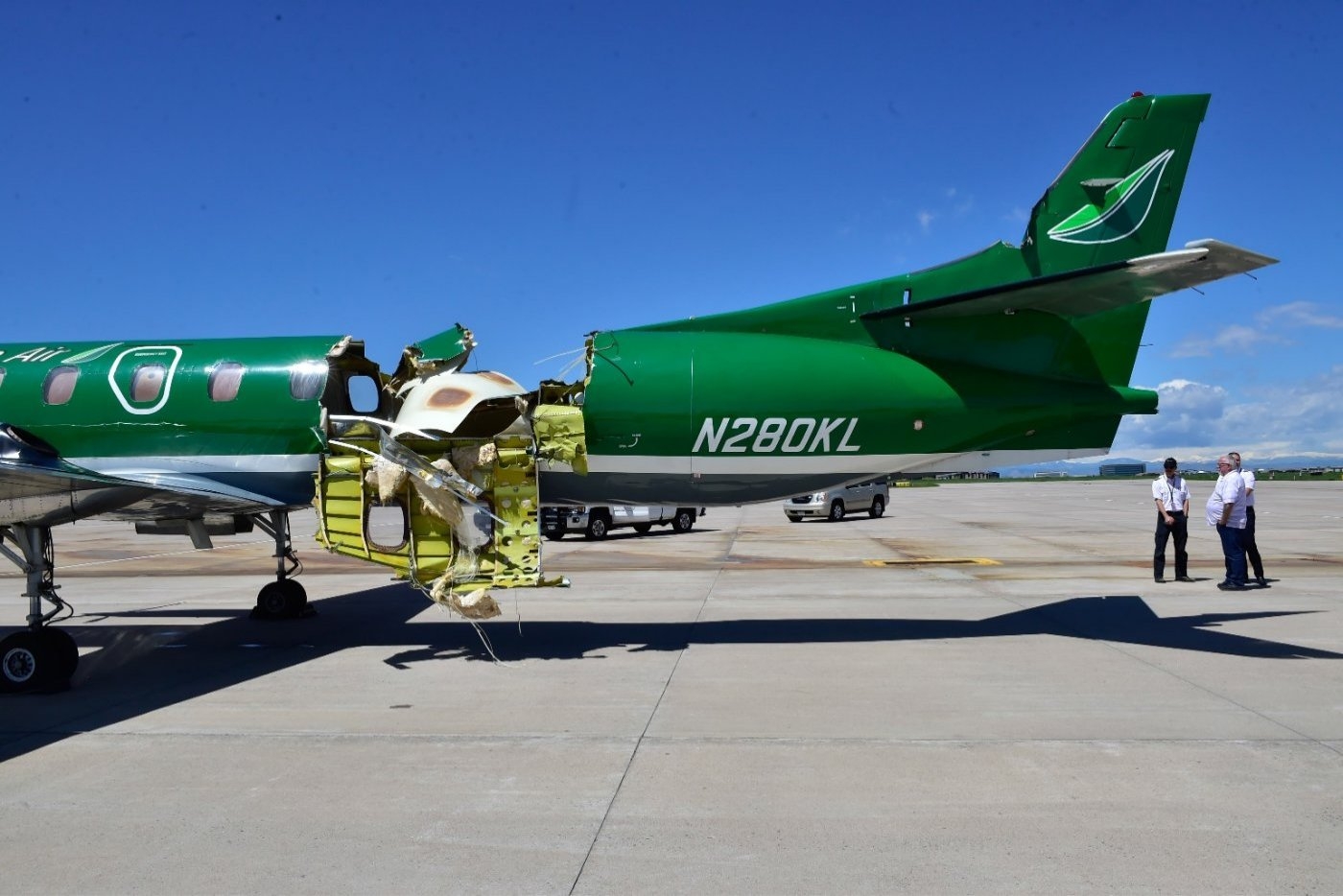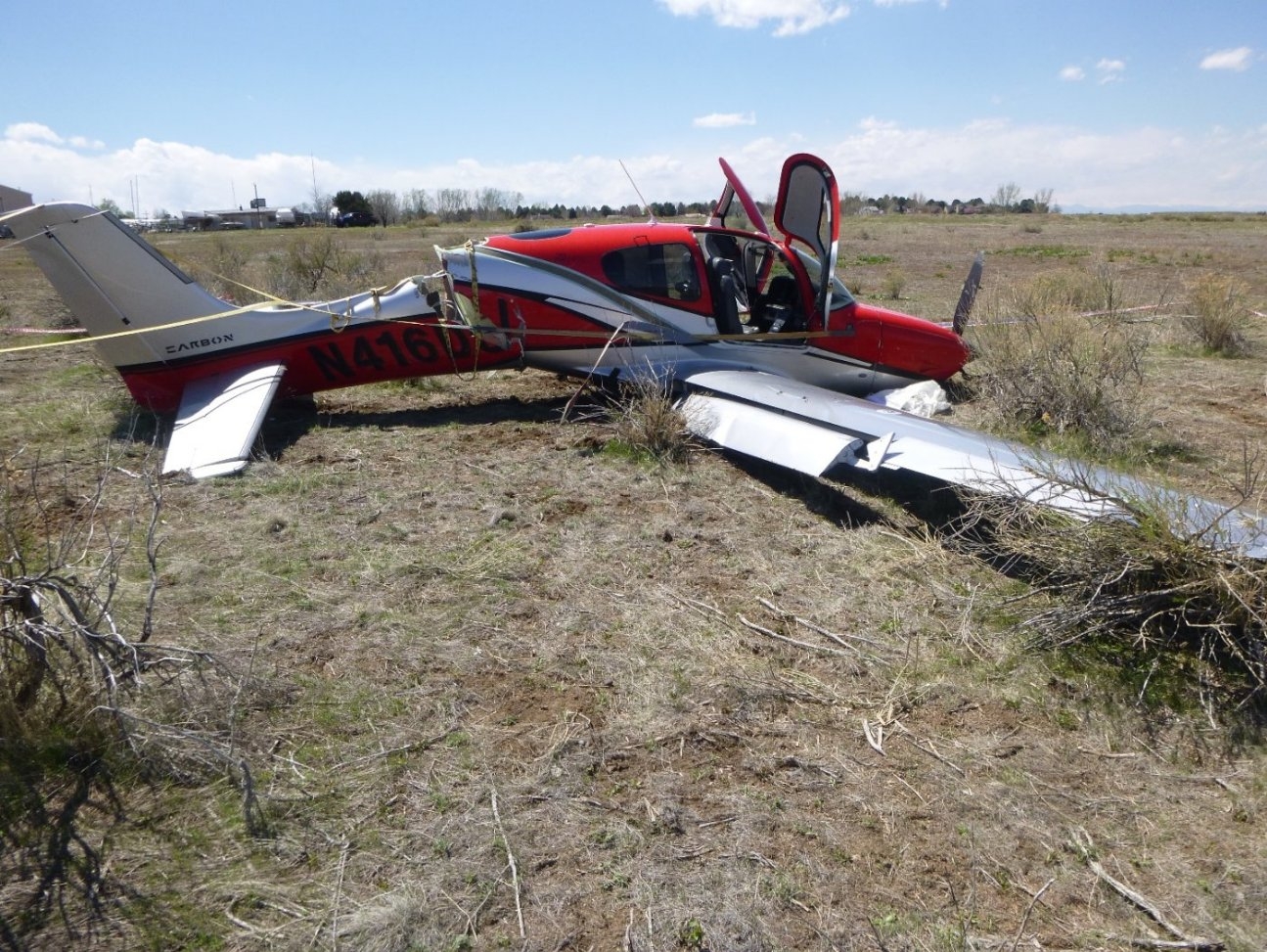On May 12, 2021, at 1023 mountain daylight time, a Cirrus SR22 airplane, N416DJ, and a Swearingen SA226TC airplane, N280KL, were substantially damaged when they collided in flight while approaching to land at Centennial Airport (APA), Englewood, Colorado. The pilot and passenger onboard the Cirrus were not injured, and the pilot onboard the Swearingen was not injured. The Cirrus was operated as a Title 14 Code of Federal Regulations (CFR) Part 91 personal flight, and the Swearingen was operated as a Title 14 CFR Part 91 positioning flight.

Photograph of the Swearingen after the accident.
At the time of the accident, parallel runways 17R and 17L were being utilized for simultaneous operations at APA. Automatic Dependent Surveillance-Broadcast (ADS-B) data was provided by the Federal Aviation Administration (FAA), and data from the on-board Remote Data Module (RDM) was downloaded from the Cirrus. The data showed that the Cirrus departed APA for a local flight about 0921, and the Swearingen departed the Salida Airport (ANK), Salida, Colorado, about 0956. About 1022:43, the Swearingen was about 5.5 nm from APA and had completed a right turn to align with the final approach course to runway 17L. At this same time, the Cirrus was on the downwind leg of the right-hand traffic pattern for runway 17R just before commencing a right turn to the base leg of the traffic pattern.
The Swearingen continued its approach and remained aligned with runway 17L. The Cirrus continued the right-hand traffic pattern through the base leg, and then began to turn toward the final approach course for the runway. The Cirrus continued through the extended centerline for runway 17R, and then continued to the extended centerline for runway 17L where it collided with the Swearingen. The airplanes collided at 1023:52 when they were about 3.2 nm from APA. The Swearingen was aligned with runway 17L while the Cirrus had not completed the turn from base to final and was heading about 146° when the collision occurred.

Photograph of the Cirrus at the accident scene.
After the impact, the pilot of the Swearingen declared an emergency, continued to APA, and landed successfully on runway 17L. The pilot of the Cirrus reported that the airplane was not controllable after the impact, and he deployed the Cirrus Airframe Parachute System (CAPS). The Cirrus came to rest about 3 nm north of APA. Both airplanes sustained substantial damage.
Download the
final report from CAROL
We determined the probable cause(s) of this accident to be: The Cirrus pilot’s failure to maintain the final approach course for the assigned runway, which resulted in a collision with the Swearingen which was on final approach to the parallel runway.
Contributing to the accident was the failure of the controller to issue a traffic advisory to the Swearingen pilot regarding the location of Cirrus, and the Cirrus pilot’s decision to fly higher than recommended approach speed which resulted in a larger turn radius and contributed to his overshoot of the final approach course.